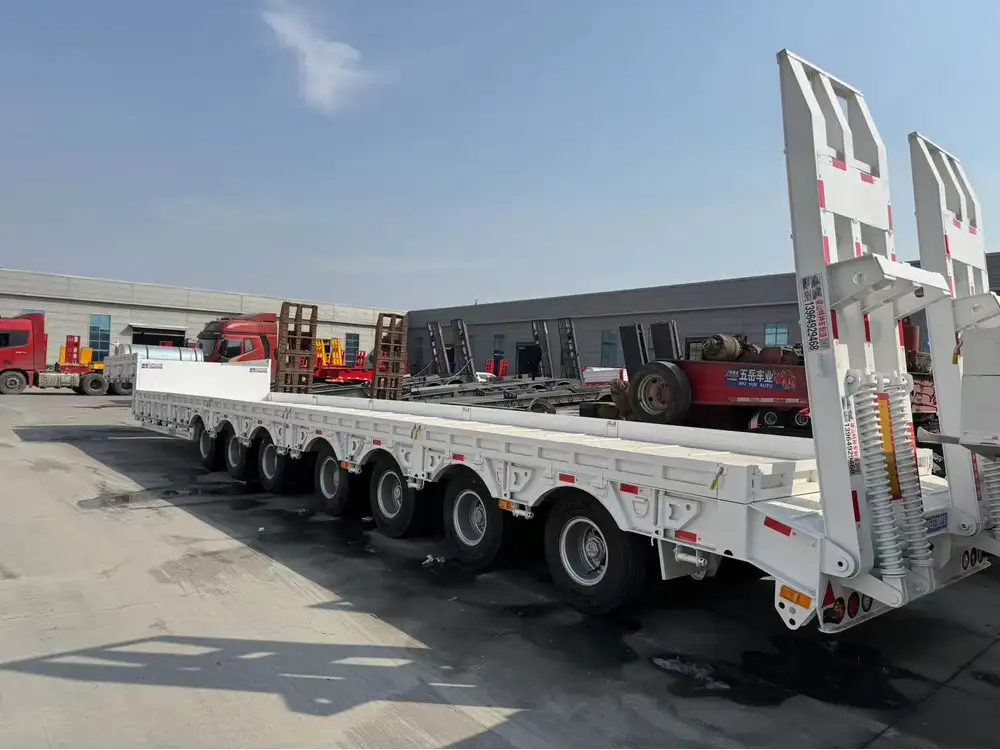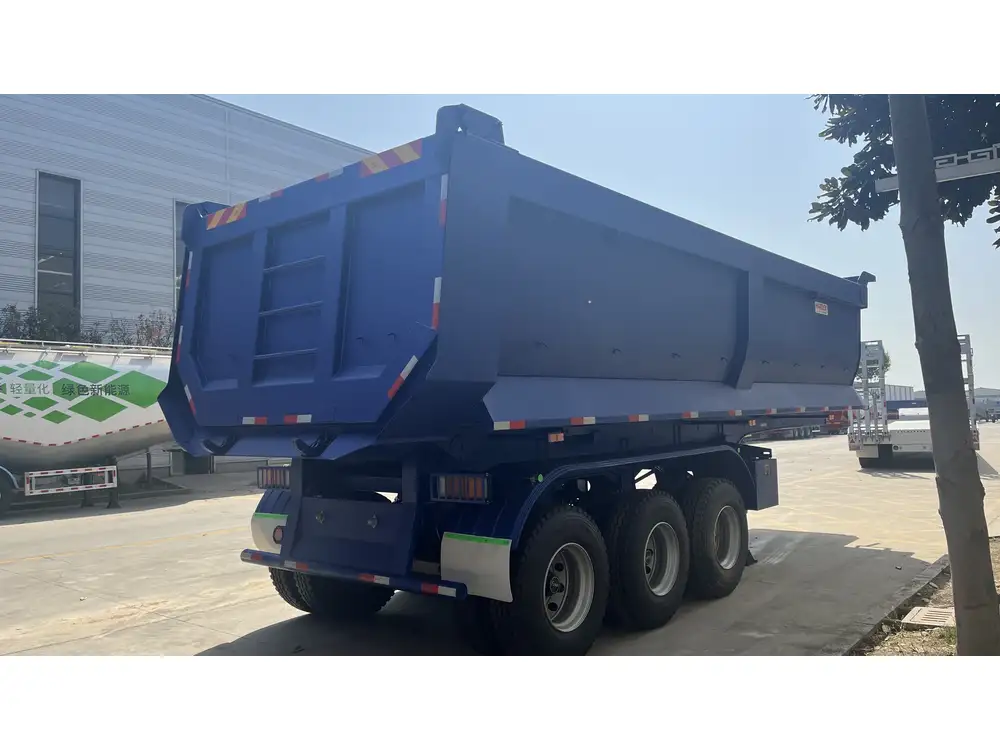Understanding the 7-Pin Connector System
The 7-pin connector is a crucial component in the transportation industry, serving as the primary means of electrical connections between semi-trailers and towing vehicles. This connector allows for various functionalities, including running lights, turn signals, brake lights, and auxiliary power. Given the critical nature of these functionalities, understanding how to test 7-pin connector semi-trailer lights is essential for ensuring safety and compliance on the road.
Components of the 7-Pin Connector
| Pin Number | Function | Description |
|---|---|---|
| 1 | Ground | Provides a common ground for circuits, essential for return paths. |
| 2 | Tail/Marker Lights | Powers the rear marker lights and tail lights for visibility. |
| 3 | Left Turn Signal | Activates the left turn signal lights on the trailer. |
| 4 | Right Turn Signal | Activates the right turn signal lights on the trailer. |
| 5 | Brake Lights | Powers the brake lights, essential for signaling stopping. |
| 6 | Reverse Lights | Powers the reverse lights to improve visibility when maneuvering in reverse. |
| 7 | Auxiliary Power | Provides extra power, often used for additional lights or equipment. |

Why Testing is Crucial
Regular testing of your semi-trailer lights is not merely a suggestion—it’s a necessity. Legal requirements mandate that all trailers must have functional lights, and malfunctioning lights can lead to dangerous situations on the road. Furthermore, faulty lighting can result in fines, vehicle impoundment, and increased insurance premiums. Ensuring that your 7-pin connector is working correctly will enhance safety, improve efficiency, and prolong the lifespan of your lighting systems.
Common Issues with 7-Pin Connectors
- Corrosion: Moisture and weather can cause corrosion, leading to poor electrical connections.
- Loose Connections: Over time, vibrations from driving can loosen the pins, causing intermittent failures.
- Frayed or Damaged Wires: Physical damage to wiring can interrupt the electrical flow.
- Burned Out Bulbs: Bulb failure is a common issue that can easily go unnoticed without proper testing.
Tools Required for Testing
Before diving into the testing process, gather the following tools to ensure accurate and efficient testing:
- Multimeter: A versatile tool for measuring voltage, current, and resistance.
- Test Light: A simple device that indicates power flow through a circuit.
- Wire Brush or Sandpaper: For cleaning corroded connectors.
- Crimping Tool: For securing any loose wires or connectors.
- Replacement Bulbs: For quick bulb replacements if required.

Step-By-Step Guide to Testing 7-Pin Connector Lights
Step 1: Inspect the Connector
Start with a visual inspection of the 7-pin connector. Look for any signs of corrosion, loose wires, or physical damage. Use a wire brush or sandpaper to clean any corroded areas to ensure good electrical contact.
Step 2: Test for Ground
- Set Your Multimeter: Turn on your multimeter and set it to the DC voltage setting.
- Connect the Ground Pin: Insert one probe into the ground pin (Pin 1).
- Check Connection: Touch the other probe to a stable ground on the towing vehicle. A reading close to 0 volts indicates a solid ground connection. A higher reading may indicate a poor ground.

Step 3: Test Tail/Marker Lights
- Turn on Tail Lights: Start the vehicle and switch on the tail lights.
- Probe the Connector: Insert the multimeter probe into Pin 2. You should read approximately 12 volts.
- Using a Test Light: An alternative is to use a test light; it should illuminate when the tail lights are on.
Step 4: Test Turn Signals
- Activate Left Turn Signal: Have an assistant activate the left turn signal.
- Multimeter Probing: Insert the probe into Pin 3. You should observe a pulsing voltage (around 12 volts) as the signal blinks.
- Perform Right Turn Signal Test: Repeat this process for the right turn signal using Pin 4.
Step 5: Test Brake Lights
- Press the Brake Pedal: With the vehicle’s engine running, press the brake pedal.
- Check Pin 5: Probe Pin 5 with your multimeter or test light. You should see a constant voltage close to 12 volts.

Step 6: Test Reverse Lights
- Engage Reverse Gear: Shift the vehicle into reverse.
- Check Pin 6: Probe Pin 6, seeking a voltage reading of approximately 12 volts.
Step 7: Check Auxiliary Power
- Using Auxiliary Power: If available, turn on anything powered by Pin 7 (like additional trailer lights).
- Measurement: With your multimeter, confirm that it reads near 12 volts.
Troubleshooting Tips

Corroded Pins
If you discover corrosion on any of the pins, clean them thoroughly with a wire brush or sandpaper, then retest. If issues persist, consider replacing the connector itself.
Inconsistent Voltage Readings
If voltage readings are inconsistent, inspect the wiring for any fraying or damage. Tighten any loose connections and retest.
Replace Bulbs as Needed
Always keep spare bulbs on hand. If any bulb is burnt out, replace it immediately before performing further tests.

Maintaining Your 7-Pin Connector System
To prolong the life of your 7-pin connector and ensure consistent performance, consider implementing the following maintenance strategies:
- Regular Inspections: Conduct a monthly inspection of the connectors for signs of corrosion, wear, or damage.
- Cleaning Routine: Clean the connectors every few months or more frequently if driving in harsh environments.
- Protective Grease: Apply dielectric grease to the pins to prevent moisture ingress and corrosion.
- Avoid Overloading: Ensure the auxiliary power usage does not exceed the connector’s rated capacity, avoiding undue stress on the system.
Conclusion
Understanding how to test the 7-pin connector semi-trailer lights is crucial for ensuring safety on the road. Regular testing not only guarantees that your lighting system is functioning correctly but also helps prolong the life of your equipment. By following the steps outlined above and maintaining your 7-pin connector assembly, you can reduce the likelihood of roadside issues and ensure compliance with transportation regulations.
Remember, investing time in proper testing and maintenance is not just about avoiding penalties; it is about keeping you and others safe on the road.



